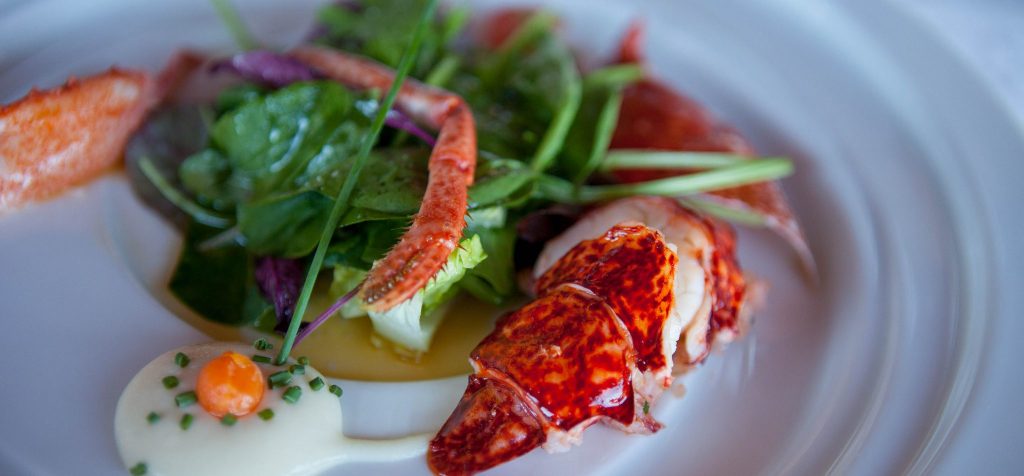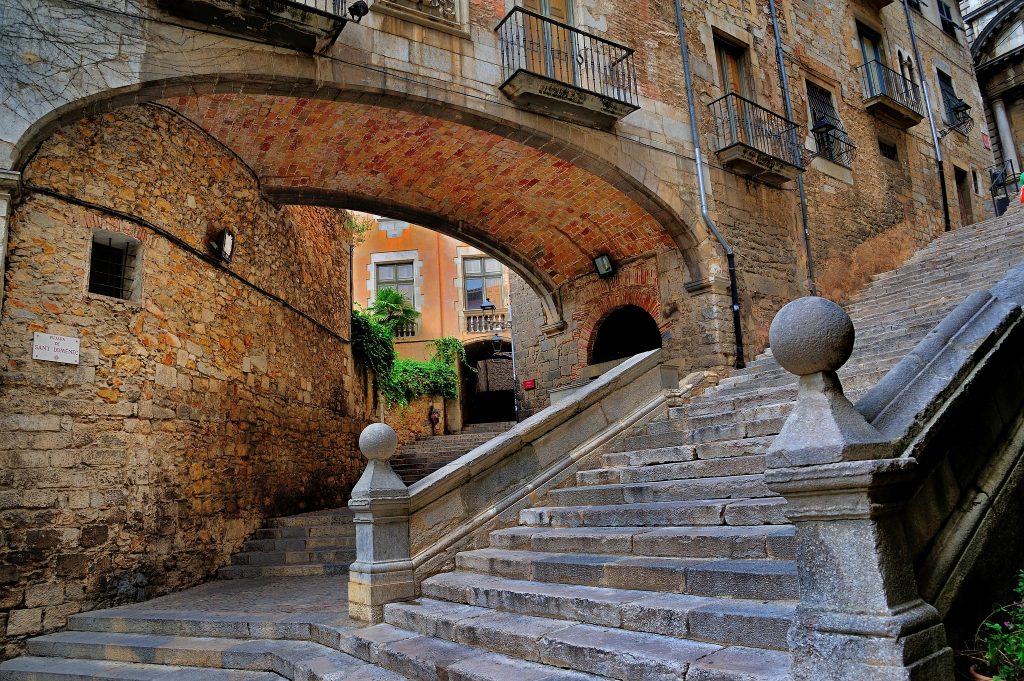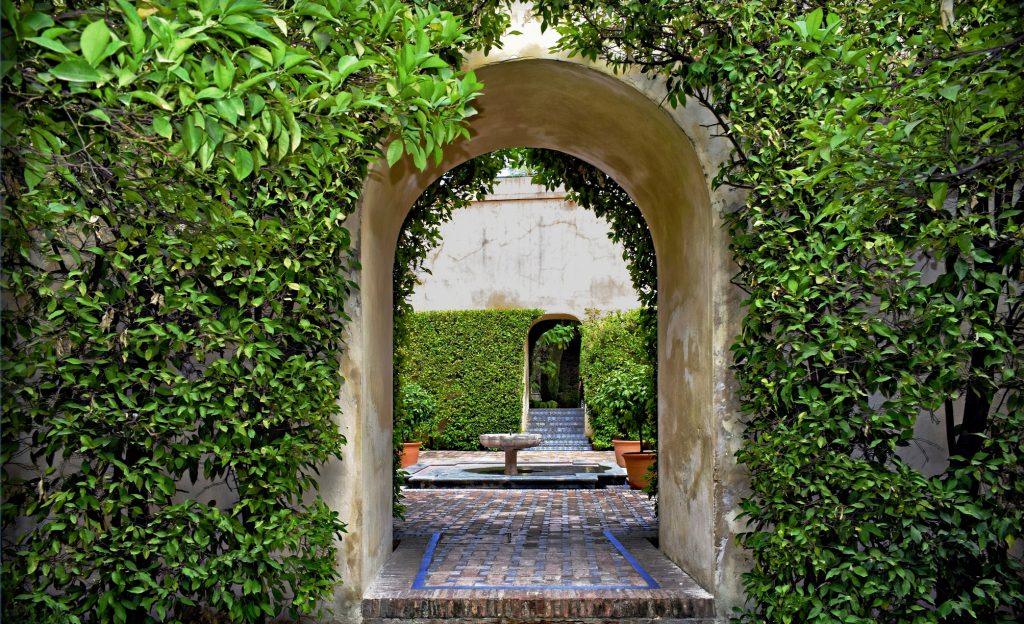Five Small Towns in Spain Every Foodie Needs to Visit!

Your visit to Spain need not take on the predictable pace of one city on Tuesday, then bolting to a new city on Wednesday, with one too many museums (and perhaps a little party island hastily thrown in at the end to catch a quick sunburn) before jetting back to cooler climates. Big cities like Madrid and Barcelona surely have their charms, but beyond these iconic hubs, a world of incredible experiences awaits within the little villages of the rugged Mediterranean Costa Brava that have inspired the likes of artists Joan Miró and Salvador Dalí; within the bleached-white towns of the Andalucían Riviera on your way to Jerez de la Frontera; and amidst the spine-tingling cliffs of Hemingway’s Ronda, so vividly described in one of the most sobering scenes of his benchmark novel, “For Whom the Bell Tolls.”
Spain overflows with treasures, from Catalunya to Galicia, down to the strait of Gibraltar and back. Living in a city like Barcelona, so full of international energy that a dozen languages hang in the air as you make your morning commute, I sometimes forget how different things are in the true countryside of Spain, where people live and die by tradition and trade. There, the simplest dish is elevated to local stardom, the best wine is the one that comes from the closest vineyard, and everyone’s hometown is “the most beautiful you will ever see.” Village pride takes on a whole new meaning in hamlets so insular that, in this modern age, outside faces are still out of the ordinary and noticed by the locals.
The longest you can realistically drive in a straight line in Spain before meeting the sea or colliding with the Portuguese border is a mere eleven hours. I’m the first one to tell you that vacations are better spent in one city for ten days than ten cities in ten days, but undertaking a Spanish road trip to explore the lesser known corners of this country, so drenched in passion, culture, and history, was more than worth the several speeding tickets that we managed to collect along the way.
Here is a list of five sparkling jewels you must see when visiting Spain:
Peratallada, Girona, Catalunya

One of the best preserved medieval towns in all of Catalunya, Peratallada has hardly expanded past its original city walls, dating back to the 12th century. Most of the town is crafted from carved stones harvested from the city’s original protective moat, which still partially encircles the small hill on which Peratallada sits. Looking out from the center of the town, you can see the rich agricultural land of the Baix Empordà wine region, spreading north towards France, east towards the sea, and south towards Barcelona, just 130 km away. For many, the barely-changed medieval character of Peratallada is the draw, but this little town offers more treasures to undercover. Three times per year, nearly all of the restaurants there —less than two dozen—participate in what they call “Gastronomic Days, ” with town-wide events and special menus.
The blossoms and bounty of Spring herald the “Cuina de l’horta” (Cuisine of the Garden), while the days honoring fowl (cuina de l’aviram) fall at the end of October, coinciding with the Medieval festival of Peratallada – a full-blown costumed affair not to be missed. Finally, as late fall/early winter descends, the days of wild game (think pheasant, deer, boar, and rabbit) herald the coming of the coldest months of the year. To enjoy these special gastronomic seasons, check out Restaurant Bonay, one of the oldest (1936) and most classic Catalan kitchens in town. Run by two brothers, Bonay is famous for their home-style recipes, which change throughout the year in harmony with the fresh, available produce and proteins. Apart from these special offerings, Restaurant Bonay’s “star plate” is the Goose with Turnips (Oca amb naps), an iconic dish from the Empordà. A stew of goose meat, “oca amb naps” is all about the meat broth and tomato sauce, thickened with a “picada” (coarse-ground mixture of sautéed goose liver, fried bread, and almonds), and finished with crispy-fried turnips stirred into the mix. Usually prepared a day ahead to maximize flavor in the sauce, this is the true “Grandmother” cooking on which restaurants like Bonay pride themselves.
Albarracín, Teruel, Aragón

Voted by many to be “The Most Beautiful Village in Spain,” Albarracín has seen a millennium of rulers. Once held as a strategic outpost of the Moorish empire, it later became a jewel in the crown of Aragón. Ringed by an impressive medieval wall and built seamlessly into the steep, rocky outcrops of land carved over centuries by the wandering Guadalaviar River, this village of just over 1,000 residents is so well preserved that, if it weren’t for the odd street sign or coach bus, you’d think you were back in the 14th century. Precarious stone houses, virtually all painted a dusty pink-orange, feature timber balconies and eaves along streets so narrow that neighbors can converse across the way without raising their voices. With churches, towers, and plaças enough to occupy a full day ( or even a few), Albarracín offers a great mix of architectural styles, plenty of opportunities to lose one’s self in the pitched maze of cobbled streets, and a unique version of Spain’s crown jewel of gastronomy: jamón.
The Spanish ham (jamón) of Teruel has had its own Denomination of Origin status since 1983 (the first D.O jamón in Spain), and though not made from the famous Black-Footed Iberian Pig, the Jamón de Teruel is a delicacy adored by the Aragonese. A combination of gentle care of the curing hams, a perfectly cool and dry mountain climate, and a distinct mixing of pig races all yield a high-quality product with minimal “bad” cholesterol. Aged a minimum of 14 months, the Jamón de Teruel is similar in color and texture to Serrano ham, but the flavour is far superior and much less salty. Most often, it is enjoyed on its own or on tomato and garlic-rubbed bread (pan con tomate), dressed with the fragrant and smooth extra-virgin olive oil of the “Bajo Aragón” region, made predominantly from the high-producing Empeltre olive variety.
If you’re looking for a foodie souvenir and a leg of jamón won’t fit into your travel plans, a bottle of “Aceite de Oliva del Bajo (lower) Aragón” is a great gourmet product indicative of the cuisine and culture of Teruel. The slightly-touristy yet extensively stocked Jamonería El Rodeno is a great solution for having all of the region’s gourmet treasures, including the region’s many artisanal cheese, gathered in one place and ready for purchasing. For the most traditional of local restaurants, check out El Rincón del Chorro. Ingredients and dishes such as pig’s feet, bean stews, “migas” (fried bread crumbs), borrage (the most famous local green), wild mushrooms, and—the Star of Aragonese cuisine—roasted baby goat. The list of “specialties of the house” is dizzying, but just order adventurously and you are sure to have an unforgettable meal.
Morella, Castellón, Valencia

An easy jaunt from the Mediterranean coast, it becomes obvious upon approach why the fortified city of Morella, situated in a strategic hill-top position between the Ebro River delta to the north and the coast plains of Valencia to the south, has always been a sought-after prize.
With towers and a castle “in the air,” Morella is visible from a great distance by excited visitors upon approach, and your first view of the city rising up as if to meet the sky is impressive. At night, the city lights the castle from below, turning it into a shining beacon that burns big and bright into the expansive countryside.
There are three reasons to visit Morella (other than the rich history, jaw-dropping architecture, and famous textile trade) and they are all delicious culinary treasures: Truffles, Cheese, and Honey.
Known as “Black Diamonds”, the truffles on Morella are famous throughout Spain, and every year from late January to mid-March, the “Days of the Truffles” fall bountifully on this picturesque village. In addition to special restaurant menus throughout Morella (at an average cost of around €30), one finds “show cooking” events to be enjoyed at various times during the season. 2015 marks the festival’s 12th year.
In addition to these tasty truffles, Morella is also known as the land of (goat’s) milk and honey. Many shops in Morella sell the region’s famous goat and sheep’s milk cheeses, as well as countless varieties of local honey, from orange blossom scents to thyme and rosemary. Perhaps the most famous of these shops is Guimera Morella, known as the “House of Honey”. Sample their 60 day-aged “tronchón”, made from raw sheep’s milk, as it represents cheese making style of the surrounding province perfectly. Although this “Honey House” is admittedly a bit touristy, it is, by and large, the best selection of artisanal products around.
Antequera, Málaga, Andalucía
If you think Andalucía is just about the famous cities of Granada, Málaga, and Sevilla, think again. There are countless smaller towns and villages scattered across Spain’s largest region that are more than worthy of an extended stay. All 17 “autonomous communities” of Spain are distinct, and Andalucía is known for embodying the bold, passionate, pure soul of true old Spanish tradition and culture. Survey the things that outsiders consider to be “typical” of Spain and you’ll discover that many have their origins in Andalucía: bullfights, flamenco music, sangria, and tapas among them. These hallmarks, plus a unique architectural style influenced by hundreds of years of Arab rule, have shaped the south of Spain into what feels to a northern Spaniard like an entirely different country altogether.
Famous in Andalucía are the “white towns” that dot the countryside, bleached and shining in the hot southern sun. Of all of them, Antequera is perhaps the most famous. More a small city than a village, many consider Antequera “the Heart of Andalucía” because of its location, situated between the four most important cities of the community: Málaga, Granada, Córdoba, and Sevilla. You could easily spend several days to a week exploring Antequera and the surrounding salt flats and natural parks, but if you only have a short time to visit, there are several stops that you just can’t afford to miss.
The gastronomia of Antequera is very typical of Andalucía as a whole, but with its own unique flourishes. Known worldwide is the superstar chilled soup, Gazpacho, while its thicker, creamier less well-known cousin from Córdoba—the Salmorejo—also enjoys notable fame in various provinces of Spain. However, even more unique is the thicker-still, cucumber-less variation known as Porra, the pride of Antequera. A pureé of tomato, garlic, red or green peppers, vinegar, olive oil, and enough bread to make a spoon stand up straight in your bowl, the traditional Porra often gets a final decoration of confited tuna or diced jamón. Another dish that no visitor should miss is the “Chivo a la pastoril,” an ultra-classic Malagueño dish of braised baby goat in a tomato and white wine sauce, thickened with a picada (purée) of satuéed goat’s liver, garlic, and bread.
In the realm of the tasty bar food for which Spain is so famous, Antequera is home to the beloved king of simple Spanish sandwiches—The Mollete. Molletes are popular throughout southern Spain and can be generally described as little sandwiches on very soft, almost “under-baked” artisan bread that is thought to have Arab origins. However, the primarily pork toppings of this excellent snack are certainly a post-Moorish addition. Butter or olive oil serve as the most simple mollete dressings, while chicharrones (pork rinds), paté, cured meats, and zurrapa de lomo (pork loin confit in lard; a type of of Spanish rillettes) pack tons of flavor into these little delicacies. Make a stop at the most famous mollete bar in town, La Antequerana, and join the locals in their late afternoon repast.
Hondarribia, Gipuzkoa, Basque Country

Literally butting up against the borders of France, on the shores of the gorgeous but unpredictable Bay of Biscay, sits the little Basque town of Hondarribia. One of the most beautiful villages in the entire region, Hondarribia’s ultimate claim to fame is its food scene, which is an ample reward for the plane, train, or bus ride required to get to this far corner of the Iberian peninsula.
In recent years, many young chefs have set up shop in this little town, which is growing in popularity each season. After cutting their teeth with the Michelin-starred chef “greats,” these newcomers are doing what has become the biggest trend in fine dining: going back to the basics.
With every new pintxo (Basque-style bar food that consists of a slice of bread with a topping “pinchado” [stuck on] with a toothpick) served up along the charming port of Hondarribia, the competition only continues to build; good news for every gastro-traveler looking to sample the Basque Country’s best. In fact, Hondarribia has one of the highest concentrations of bars and restaurants per area in the entire region!
Pintxos are a must when visiting pretty much any city or town in the Basque Country, and Hondarribia’s plethora of exceptional options does not make the decision of which bar to choose a simple task. However, this abundance should not be seen as a source of stress; rather it should be embraced to the fullest. Hopping from one pintxo bar to the next, grazing freely while sipping the refreshing local txakoli wine, is the best—and most fun—way to sample as many classic and modern preparations as possible. But, if you only have the chance to visit one of these Basque marvels, visit the Bar Gran Sol for award-winning pintxos and a huge variety of everything from rustic Grandma recipes to Michelin star-esque refinement. And speaking of Michelin stars, the restaurant Alameda comes highly recommended, both for their elegant approach to modern interpretations of high Basque cuisine, and their stunning dining room, with a terrace that is always in top demand. They have three price levels of tasting menus that are fairly reasonable, just make sure to book a table ahead of time.
Other than the excellent mix of fine and affordable bars that pepper the colorful streets of Hondarribia’s marina and “Old Town,” plenty of rich history and impressive architecture can be found to make any travel photo album (or Instagram gallery) complete. The fortifying wall that surrounds the Medieval quarter of the town is one of the oldest in the Basque Country, and the town beach is a wide and tranquil strip of nearly 1km of soft sand for your lounging and sunning pleasure. If you haven’t eaten yourself into a complete stupor, the Bay Trail (Camino de la bahía) offers a stunning 14km, sea-side route, to be enjoyed on foot or on bicycle. Don’t worry, there will be more pintxos waiting for you at the end.
Note: In the Euskal Herria (“Basque Country” in the local language of Euskal), you may see signs hung from balconies that read: “Dear tourist, remember, you are not in Spain, nor France. You are in Basque Country!”—a reminder of the fierce, independent nature of Basque people, both on the Spanish and French side of the Pyrenees.
In short, the variety of Spanish landscape, history, and cuisine is vast. Get out of the big city every now and then and taste the treasures that Spain’s tiny towns have to offer.
Are you interested in a quaint village tour of Spain? Let us customize a trip just for you!







